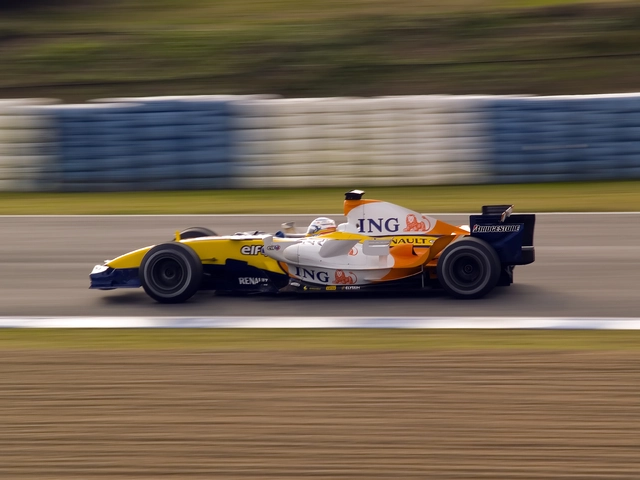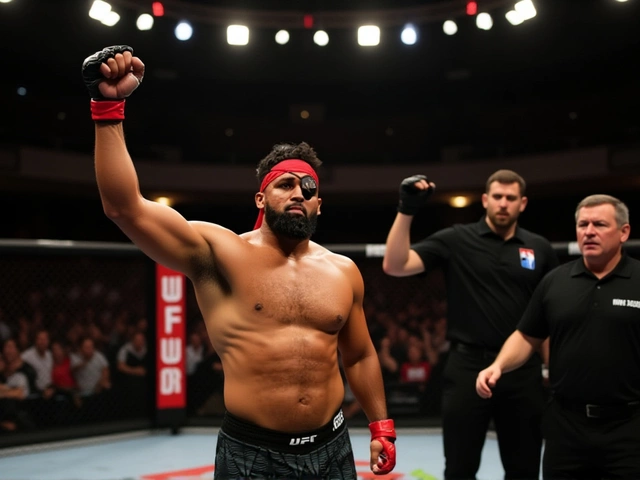On a Saturday night in Lusail, Qatar, Waldo Cortes-Acosta didn’t just win a fight—he rewrote the script. The 34-year-old Dominican Republic-born heavyweight, known to fans as "Salsa Boy," stepped into the Octagon with just three days’ notice, replaced an injured opponent, and knocked out Shamil Gaziev, the #11-ranked heavyweight, in a devastating 1 minute and 22 seconds. The bout, part of UFC Fight Night Lusail Sports Arena, was the final fight night of 2025—and it ended with a punch that echoed through the entire division.
The Knockout That Shook the Heavyweight Division
It wasn’t a flurry. It wasn’t a lucky shot. It was precision under pressure. After Gaziev pressed forward with a three-punch combo, Cortes-Acosta slipped slightly, landed a sharp jab, then unleashed a short, looping right hand that landed like a hammer on Gaziev’s jaw. The Bahraini fighter’s eyes rolled back before his body folded. Referee Lucas Pasaki didn’t even need to count. The crowd of 12,800 at the Lusail Sports Arena erupted—not just because it was a KO, but because it came out of nowhere.
Cortes-Acosta hadn’t even been on the card 72 hours earlier. Original opponent Sergei Spivac, the Ukrainian heavyweight, pulled out for undisclosed reasons. That’s when UFC brass turned to Cortes-Acosta, who’d just fought and won a controversial decision over Ante Delija on November 2. Two fights in 20 days. No camp. No sparring partners. Just grit, instinct, and a body that refused to quit.
A Year of Relentless Momentum
2025 has been the year Cortes-Acosta became impossible to ignore. He entered the year with a 13-10 record and three straight losses. Then, in March, he beat Ryan Spann. In June, he took out Sergei Spivac in a brutal grappling battle. In October, he won a decision over Ante Delija—a fight many thought he lost. And now, this. Five wins in 2025. Four by knockout or stoppage. His professional record now stands at 16-10, with 12 finishes.
He’s not just winning—he’s doing it on short notice, against ranked opponents, and with a style that’s equal parts salsa rhythm and sledgehammer power. His movement is unusual for a heavyweight: he bobs, he weaves, he circles like a middleweight. And when he finds the opening? He doesn’t waste it.
Who Is Shamil Gaziev—and What Does This Mean for Him?
Shamil Gaziev, 35, is no novice. Trained out of Moscow, he’s a former KSW champion with a 10-2 professional record. His only other loss came in December 2024 to Jairzinho Rozenstruik, in a main event that ended in a brutal KO. Gaziev was supposed to be the test—someone who could ground Cortes-Acosta, control the pace, and expose his lack of preparation.
Instead, he got the fastest knockout of his career. The impact was immediate. Gaziev didn’t just lose—he looked dazed, confused, as if the fight hadn’t even started. His team didn’t protest. No one questioned the stoppage. The punch was clean. And it was over.
For Gaziev, this is a setback—but not a career-ender. He’s still a top-15 heavyweight with a solid base. But now, he’ll have to rebuild momentum while others like Cortes-Acosta surge ahead.

"I Want One More Fight in December"
After the fight, Cortes-Acosta, still breathing hard, stood in the Octagon with Michael Bisping, the former middleweight champ and ESPN analyst. The camera caught the sweat on his brow, the swelling on his knuckles, the raw emotion in his voice.
"Thank you God for be me here... Uh thank you UFC for give me the opportunity," he said, his accent thick but his intent clear. "I want to I want to finish it this year for one more fight. This is too quick. I want to fight next month if the guy can can permit it December 13."
It’s not just a wish. It’s a demand. And the UFC might just grant it.
If he fights on December 13, Cortes-Acosta would become the first heavyweight in UFC history to compete five times in a single calendar year. The current record is four, held by Stipe Miocic in 2018 and later matched by Francis Ngannou in 2021. But those were title fights, with months of training. Cortes-Acosta’s fifth fight would be on three days’ notice—after a fight on 15 days’ notice.
Why This Matters Beyond the Record Books
The heavyweight division is frozen. Tom Aspinall and Ciryl Gane are waiting to rematch, but the winner won’t fight until early 2026. That leaves a vacuum. And Cortes-Acosta, with five wins this year and two KOs in the last month, is the only man in the top 10 who’s actively moving.
He’s not just a contender—he’s a wildcard with momentum. If he fights again in December, he’ll likely face someone like Alexander Volkov or Derrick Lewis. Either way, he’d be the hottest name in the division. And if he wins? He could jump into the title picture before the Aspinall-Gane winner even steps back in the cage.
The UFC doesn’t like short-notice fights. They prefer camps, buildup, marketing. But when a fighter delivers like this—on zero prep, against a ranked opponent, with a highlight-reel finish—they make exceptions.

What’s Next?
UFC President Dana White hasn’t commented yet. But sources close to the organization tell Cage Side Press that Cortes-Acosta’s request is "under serious consideration." If the December 13 card is finalized, it would likely be a UFC Fight Night in Las Vegas or Abu Dhabi, with Cortes-Acosta headlining.
Meanwhile, the fight video—posted by ESPN MMA at 11:07 AM PST on November 22—has already surpassed 8.2 million views on X (formerly Twitter). The hashtag #WaldoCortesAcosta is trending in the Dominican Republic, Brazil, and Russia. His social media following has jumped from 180,000 to over 400,000 in 48 hours.
He’s not just fighting for a title. He’s fighting for legacy.
Frequently Asked Questions
How did Waldo Cortes-Acosta manage to win on only three days’ notice?
Cortes-Acosta had already been training for his November 2 fight against Ante Delija and remained in peak condition. He didn’t need to cut weight or rebuild strength—he just adjusted his sparring schedule and focused on timing. His coach, Carlos Mendez, said he "never leaves the gym," and his conditioning allowed him to absorb the shock of a short-notice fight without losing sharpness.
Why is Cortes-Acosta’s five-fight year in 2025 so rare for heavyweights?
Heavyweights typically fight once every 6–9 months due to the physical toll of training, weight cuts, and recovery. Five fights in a year would require fights every 2.5 months—nearly impossible without injury. Cortes-Acosta’s ability to fight twice in 20 days and still KO a ranked opponent is unprecedented in the modern UFC era.
Who are the top contenders waiting for the Aspinall-Gane rematch?
Besides Cortes-Acosta, top names include Alexander Volkov (10-3), Derrick Lewis (25-12), and Sergei Spivac (14-2). But none have the momentum Cortes-Acosta has right now. If he wins again in December, he could leapfrog them all.
What’s the significance of Cortes-Acosta being from the Dominican Republic?
The Dominican Republic has produced few top-tier UFC heavyweights. Cortes-Acosta is the first from the country to reach the top 10 in the division. His success could inspire a new generation of fighters from the Caribbean, where MMA infrastructure is still developing. His nickname, "Salsa Boy," has become a symbol of cultural pride in Latin American MMA circles.
Could Cortes-Acosta fight for the heavyweight title in 2026?
If he wins his December fight, it’s likely. The winner of Aspinall vs. Gane won’t defend the belt until March 2026 at the earliest. Cortes-Acosta could be the mandatory challenger by then, especially if he wins two fights in a row. The UFC loves a compelling story—and his path from obscurity to title contention in under a year is exactly that.
What did UFC officials say about Cortes-Acosta’s request for a December fight?
No official statement has been released, but sources confirm that Dana White was in attendance and appeared "very impressed." The UFC’s fight scheduling team is reportedly reviewing potential opponents for December 13, with Alexander Volkov and Sergei Spivac as top candidates. A decision is expected by December 1.



